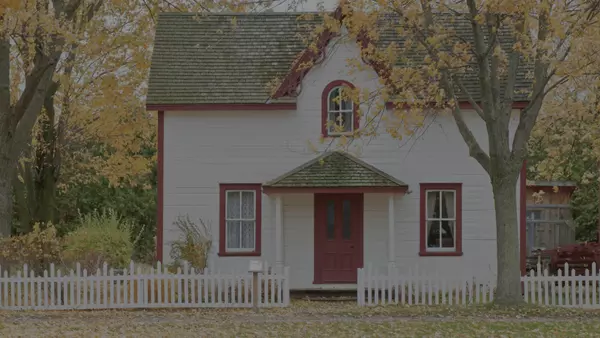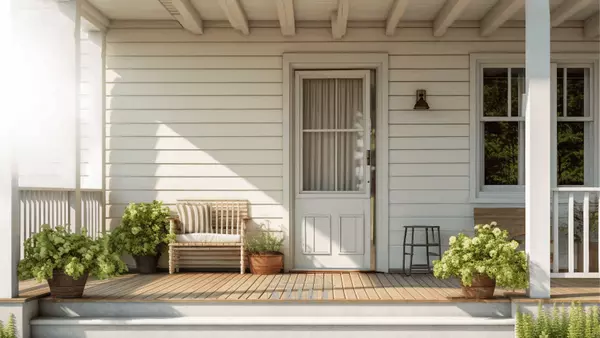8 Clever Ways to Snag Affordable Homes (Even in a Tough Market)

It might feel like snagging a deal when buying a home is nearly impossible, but there are some clever strategies that can improve your odds of finding an affordable place—even in a tough market.
As an expert buyer’s agent in the Indy area, here are my best tips for finding lower-priced homes...
1. Target Homes That Have Been on the Market for 30+ Days
One of the best ways to find a deal is by looking at homes that have been sitting on the market for a while. According to Hao Dang of the Hao Dang Team in Bellevue, WA, buyers can start negotiating discounts as early as 15 days on the market. “For every 15 days, we can usually negotiate 2% to 3% off the purchase price. Once it hits the 30-day mark, sometimes we can negotiate 5% to 10% off,” he says.
Why? Because sellers start getting antsy when their home doesn’t sell quickly, making them more open to price reductions or other concessions.
2. Avoid Turnkey Homes and Major Fixer-Uppers
If you’re willing to put in a little work, you can save a lot of money. The key is to avoid extremes—don’t go for a fully renovated home at top dollar, but also steer clear of complete gut jobs unless you have the cash set aside for major renovations.
A good middle ground is a house that needs light updates—think fresh paint, new carpet, or removing outdated popcorn ceilings. This way, you get a better deal without the overwhelming costs of a total rehab.
3. Consider More Affordable Housing Options
A traditional single-family home with a big yard is the dream for many, but there are plenty of alternatives that can be more budget-friendly. Think about:
-
Condos, co-ops, or townhomes—These often cost less than stand-alone houses and can still give you homeownership benefits.
-
Multi-family homes—Buy a duplex or triplex, live in one unit, and rent out the others to help cover your mortgage.
-
Buying with friends or family—Pooling resources can make homeownership more affordable.
-
Accessory dwelling units (ADUs)—Smaller homes or guesthouses that share a yard with a main house can be a cost-effective option.
-
Manufactured homes—Modern designs have come a long way and can offer great affordability.
4. Be Open to Homes with Unpopular Features
Your dream home might not be a 1970s ranch next to a busy road or a split-level across from a cemetery, but choosing a home that’s a little "off-trend" can help you buy in a great neighborhood at a lower price.
The key is to find a home with good bones in a location you’re comfortable with—because while you can change a house, you can’t change its location.
5. Keep an Eye on Contingent Listings
A “contingent” status means a home is under contract, but the sale depends on certain conditions (financing, inspections, etc.). If the deal falls through, the home often goes back on the market. Most buyers don’t realize they can submit a backup offer, but if the first buyer backs out, the seller might turn to you next.
6. Check Out Foreclosure Auctions
Foreclosures happen when homeowners default on their mortgages, and lenders sell the properties—often at a discount. These homes are typically sold at auction, and while there are risks involved, a good agent who specializes in foreclosures can help you navigate the process.
7. Remember: The Highest Offer Doesn’t Always Win
Don’t assume you’re out of the running just because you can’t make the highest bid. Sometimes, sellers prioritize factors beyond price—like flexibility on move-out dates.
“I’ve had sellers work with buyers on the price if the buyer would let them stay in the home while they find another place to live,” says agent Metalios. In some cases, buyers have been able to get a deal just by offering more flexibility.
8. Explore Government Loan Programs
While this won’t make homes cheaper, it can make them more affordable by reducing your mortgage costs. There are federal and local programs aimed at helping first-time buyers, public service workers, veterans, and lower-income earners. Some notable programs include:
-
VA loans (for veterans) – Help secure competitive rates with no down payment required.
-
Good Neighbor Next Door program – Offers incentives for teachers, firefighters, EMTs, and police officers in revitalization areas.
-
USDA loans – Offer no-money-down mortgages for buyers in qualifying rural areas.
-
Local assistance programs – Some areas offer down payment and closing cost assistance.
Final Thoughts
Finding an affordable home is still possible—you just need the right strategy. Whether it’s looking at longer-listed homes, avoiding move-in-ready properties, or considering alternative housing options, there are ways to buy smart by keeping an open mind to make your homeownership goals a reality! --- JRL
Categories
Recent Posts











